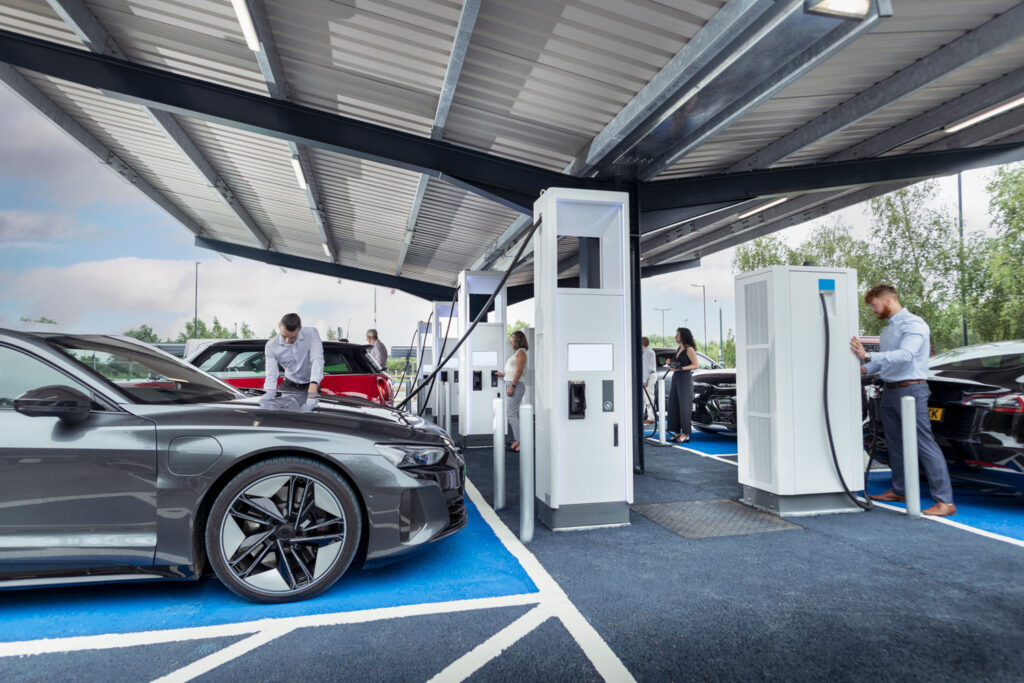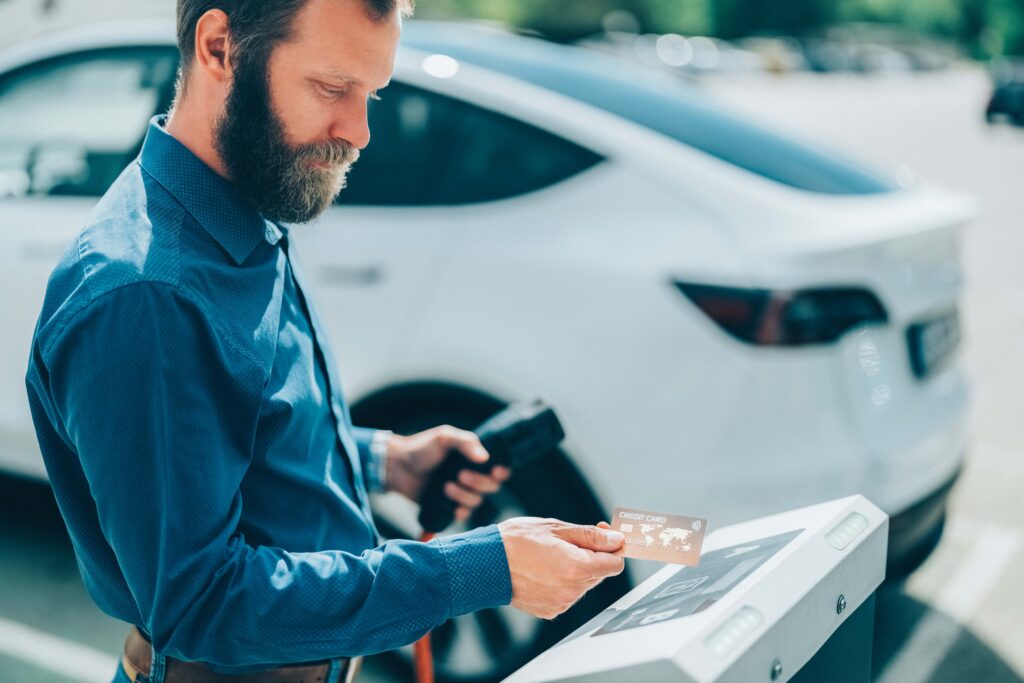Guide to public EV charging
This guide will walk you through everything you need to know about public EV charging, from finding the right charger to paying to charge your vehicle.
Energy and Charging
Can you do a long road trip in an electric car?
Do I have to have a charge point fitted at home?
How accessible are electric car charge points?
How do I charge my electric car?
Does your driving style affect how far you can drive?
How often do I need to charge?
When’s the best time to charge an electric car?
The Ultimate Guide to Charging
Are you ready to go electric?
Want to know if an electric car is the right choice for you?
Join in with our simple online quiz to find out more.
Finding the right public EV charging station
According to Zapmap, there are now more than 70,000 public EV charging devices available across the UK, so finding a suitable public EV charging station has never been easier. Here are some tips to help you locate the best spot for you:
- Use an EV charging app – Many popular apps and car Sat Navs include the location of public EV charging stations as well as payment services and practical support. Some apps allow you to search for nearby chargers, check their availability, and even plan your journey based on your current charge level.
- Plug and pay – When searching for a public EV charging station, think about the type of cables you need, and whether you have an account with the charging network to ensure easy payment.
- Plan ahead – It’s also worth considering the proximity of charging stations to your route and the time of day you plan to use them. If there is only one charger at the EV charging station, you may have to wait during busy periods.
Where else can I charge in public besides an EV charging station?
Where else can I charge in public besides an EV charging station?
EV drivers can take advantage of destination charging, which is defined as a network of medium-powered charging points located at places where people typically spend extended periods of time. This allows drivers to top up their batteries while engaging in various activities away from home. Destination chargers can be found at a wide range of locations such as theme parks, restaurants, hotels, and supermarkets. Some supermarkets offer fast charging options, which are free to use. Plus there are thousands of EV chargers available in public car parks up and down the country and 433 of them are currently free to use. Don’t forget to plan ahead and check for updates before you travel.
On-street charging
Provided by local councils initially for those without home-charging solutions, on-street charging is available to use by anyone with an EV. You can find them in various forms, from converted lamp posts to bollard-style designs. Most offer slow to fast charging speeds (3kW to 22kW), ideal for overnight charging or top-ups while you’re out and about.
Importantly, you will need your own Type 2 cable to charge on-street as most are untethered. For the first use, you will often need to download the relevant App. From there, simply identify the location of the charger using the displayed code and pay via the app for whatever power is used.

What connection type do I need to charge my EV in public?
There are three main types of connection –
- CCS (Combined Charging System): Used for fast and rapid DC charging (over 50 kW). These cables are usually attached to the charging station.
- Type 2: Used for slower AC charging (typically 7 kW or 22 kW). You often need to bring your own Type 2 cable, so always keep one in your boot.
- CHAdeMO: Some older EVs use this type, but it’s being phased out in favour of CCS (only older Nissan Leafs still use CHAdeMO).
It’s important to know which cables are compatible with your vehicle before you set off. If for any reason you misplace a Type 2 cable you can buy a replacement at most electrical or auto stockists. Read more about EV charging speeds and plugs.
How do public EV stations work?
Using a public EV charging station is straightforward once you know the steps:
- Think about which side of your car the charging point is on and park your EV in the designated unoccupied charging bay to allow easy access to the charging point.
- For CCS charging, simply plug in the cable attached to the station – the cables can sometimes be a little heavy!
- For Type 2 charging, use your own cable to connect to both the car and the charging point.
- You’ll notice there are many differently branded charging points in the UK, they don’t take cash, instead you’ll need a pre-paid payment card or a credit or debit card to operate them, but they all work in a similar way.
- Follow the instructions on the charging terminal to start your charge. This may involve using an app, tapping a card, or paying at the station.
- Wait for confirmation that charging has begun.
- When you’re finished, stop the charge using the app or EV charging station controls before unplugging – you won’t be able to unplug your car until you have actioned the ‘stop charging’ command.
You don’t need to wait with your car whilst it is charging, but of course you can do. Many public EV charging stations have refreshment facilities nearby so you can take a break and top up from driving while your car is doing the same.
What if the charging station doesn’t seem to be working?
Ensure you’ve followed all the correct steps to initiate charging. If it’s not a user error, call the helpline number displayed on the unit for assistance and troubleshooting. As a result of new legislation, from November 2024 all charge points will have a staffed telephone helpline number free to use 24/7. You can also use the charging network’s app or website to report the faulty charger as this helps other EV drivers and speeds up repairs.
How long will it take to charge my car at a public EV station?
Charging times at public EV charging stations vary depending on your car’s battery size and the charger’s power output:
- Rapid chargers (50 kW+) can typically charge to 80% in 30-60 minutes.
- Fast chargers (7-22 kW) might take 3-4 hours for a full charge.
- Slow chargers (3-7 kW) are best for overnight charging.
You can read more about how long it takes to charge your car in our Ultimate Guide to EV charging.
Public EV charging prices
Costs for public EV charging can vary depending on the charging network and speed of charge. Rapid charging tends to be more expensive than slower options. Some networks offer subscription plans for regular users, which can reduce costs.
According to Zapmap’s tracker which monitors charging sessions across the network, the average price to charge your EV on the public charging network in September 2024 was between 17p (slow charge) and 24p (rapid/ultra-rapid charger) per mile.

Paying to charge at an EV charging station.
One of the easiest ways to pay for EV public charging is to apply for an EV charge card. These can be used with multiple networks and let you manage your payments in one account, including getting receipts. Some also offer time-limited discounts on charging, so you might even be able to top-up for less. Some car manufacturers offer EV charge cards to new EV drivers. Here are some of the different options when it comes to payment:
An RFID card
An RFID card is a type of EV charge card – it is your magic key to public EV charging. It’s super simple to use – just tap it on the charger’s reader and your car will start charging.
The card’s got a tiny chip inside that’s like your EV charging ID. When you tap it, it tells the charger, “Hey, this is me, and I want to charge up!” The charger gets the message, checks that you’re good to go, and then starts powering up your car.
It’s like using a contactless bank card that is exclusively for buying electricity for your car. RFID cards are sometimes provided with home-chargers, if not you can order them through the app or website of most network charging providers – some charge a small fee for the initial card.
Pay by app
There are several apps available for charging EV’s on the public network. Some are provided by companies to specifically use on their own charge points such as BP Pulse, or Shell Recharge. Others Like Zapmap or Electroverse enable users to charge at a wider variety of EV Public charge points across the network.
Contactless
From November 2024, all rapid charge points must accept contactless payments to provide greater flexibility for car drivers who want to use EV public chargers.
By following this guide, you’ll be well-equipped to navigate the growing network of public EV charging stations. As the infrastructure continues to expand, charging your EV on the go will become increasingly convenient, making electric vehicle ownership an even more attractive option for drivers. If you are thinking of switching to an EV take a look at our range of different EV makes and models here.
Is an electric car
right for me?
Discover electric cars that are available through our partner CBVC today.
Discover cars available